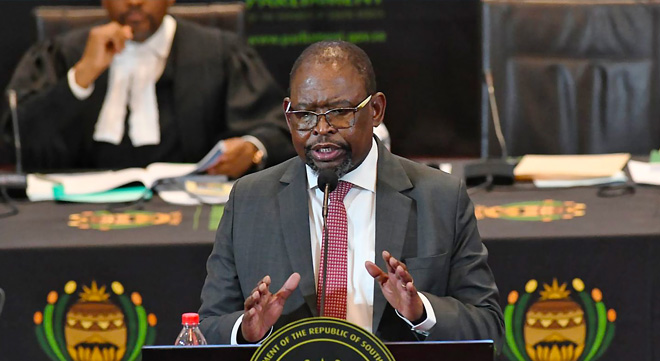Budget 2023 is as good as we could have hoped for, given the current economic conditions. National Treasury has lifted the expected government debt trajectory, but, importantly, it continues to map a path to fiscal sustainability and a lower government debt ratio in the long term.
The gross loan debt ratio increases from 71.1% of GDP at the end of fiscal year 2022/23 to a peak of 73.6% of GDP in 2025/26, before declining to 65.9% of GDP by 2030/31.
The near-term increase in the debt ratio mostly reflects Eskom debt relief of R254 billion, while debt stabilisation is achieved through a projected improvement in the Main Budget primary balance (revenue less non-interest spending) from a surplus of 0.1% of GDP in 2022/23 to a surplus of 1.7% of GDP by 2025/26.
The near-term fiscal risks are limited, given National Treasury’s sustained commitment to pursuing debt sustainability, the low level of central government foreign currency debt, improving tax administration, and South Africa’s deep, liquid domestic capital markets.
Moreover, although the government’s gross borrowing requirement remains large, at more than R500bn a year over the next three years to 2025/26, the government is expected to run down its cash balances by a cumulative R142.7bn over this period to finance a portion of the borrowing requirement, while gross issuance of domestic long-term loans increases to R330bn in 2023/24 from R311bn in 2022/23.
However, despite mapping a path to an improvement in the budget balance and, ultimately, debt stabilisation, fiscal policy is not benign with respect to its impact on the economy. Our sovereign debt rating remains sub-investment grade. Accordingly, real interest rates are high. Furthermore, the government continues to absorb a large share of available resources. In the absence of firm foreign capital inflows, the latter constrains private sector investment and job creation.
In addition, the government’s debt service cost is expected to absorb 19.8% of Main Budget revenue by 2025/26, up from 18% of revenue in 2022/23, implying that debt service costs will amount to a cumulative R1.1 trillion over the medium-term expenditure framework period. This not only illustrates South Africa’s negative debt dynamics, as debt is issued at high real interest rates relative to real GDP growth, but also the extent to which debt-servicing costs detract from the government’s ability to spend more on the social wage.
Tax relief measures
Nonetheless, Treasury has sought to alleviate some of the pressure on society, by announcing R13bn in tax relief measures in 2023/24 to support the transition to clean energy, assist in increasing electricity supply and to limit the impact of high fuel prices. As such, the budget includes proposed tax relief of R4bn to individuals who instal solar panels, as well as R5bn to companies through the expansion of the renewable energy tax incentive. Leaving the general fuel levy unchanged “costs” the fiscus R4bn.
Spending remains high
However, despite the right intent, the government’s track record in delivering has fallen short. In February 2017, National Treasury projected the government’s gross loan debt ratio would peak at 52.9% of GDP in 2018/19, decreasing thereafter to about 50% of GDP by 2024/25.
The far higher debt trajectory South Africa ended up on relative to this projection partly reflects the impact of the Covid-19 pandemic, but also, to a large extent, muted GDP growth, which has constrained revenue collection, and persistent spending pressure.
History shows that successful fiscal consolidation is unlikely without expenditure cuts relative to GDP. However, although the projected level of consolidated government spending is cut from its level of 32.6% of GDP in 2022/23, it remains high at 32% of GDP and 31.7% of GDP in 2023/24 and 2024/25, respectively, before decreasing to 31.2% of GDP by 2025/26. Over the medium-term expenditure framework, this amounts to an average annual increase in spending of 4.5% in current prices. Constraining spending to this extent in the current socio-economic environment will be difficult.
Upward risks to the expenditure profile include the wage bill, which is projected to increase by just 3.3% in current prices a year on average from 2023/24 to 2025/26. In addition, social grants increase by an average of only 2.2% a year in current prices over the three years, reflecting the termination of the Social Relief of Distress grant in 2024/25. This seems untenable.
Jury is still out
Overall, although there is some comfort in that the Budget includes unallocated reserves of R35.7bn in 2024/25 and R44.5bn in 2025/26, the upside risks to spending, the opaque outlook for GDP growth and potential additional bailouts for ailing state-owned companies imply that the jury is still out on the projection of debt stabilisation over the medium term.
Arthur Kamp is the chief economist at Sanlam Investments.
Disclaimer: The views expressed in this article are those of the writers and are not necessarily shared by Moonstone Information Refinery or its sister companies.



